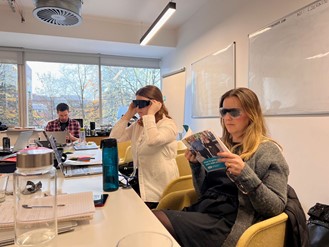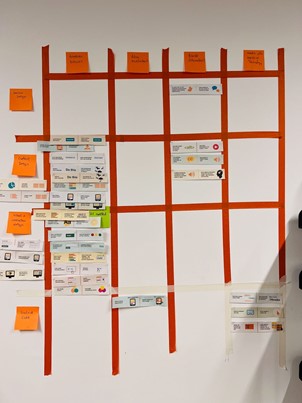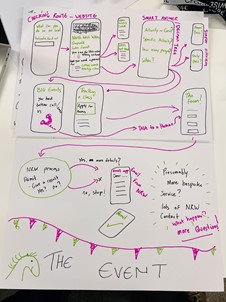Week notes 02/12/2022
Product thinking with Richard Pope
Our second fantastic speaker was Richard Pope. Richard worked as product manager for the first version of GOV.UK.
Focusing on how they moved from 74000 pages on DirectGov to a user-focused 3000 page GOV.UK, we learned that the team:
- printed tons of pages from DirectGov
- considered looking at analytics on what was being used and what wasn’t
- looked for patterns
- created groupings
- thought about how you design the best possible thing to met a user need - sometimes interactive, sometimes flat content
- Richard helped us realise that product ownership is our friend - to make sure that somebody owns it or we have delivery without vision. And always ‘show, don’t tell’, as making helps us think and explain.
Exploring some of our challenges
We had tons of NRW user data including call records, user feedback, results of earlier usability testing, emails, heatmaps and analytics. With a wide remit, NRW has lots of areas of work - some overlapping - and lots of challenges for users.
We spent time looking at the data to draw out areas to focus on. We decided to focus on the ‘permission to do something on our land’ service. We knew it is a popular service and had evidence that users struggle to find information and complete applications. It was important we could prototype something within the lab’s timeframe and, compared with other NRW challenges, we felt ’permissions’ was the simpler service to focus on.
Accessibility and inclusive design with Alistair Duggin
A morning with awesome Al filled us with enthusiasm for designing accessible services. Al brought elements of his empathy lab so we could experience a small part of the day as someone with visual difference, including macular degeneration, tunnel vision and peripheral vision loss.

Using the GDS’ accessibility personas, we did a grid exercise together. We plotted who in a typical digital team would be responsible for what and when.

Al gave us lots to think about including:
- build in accessibility from the start
- the web is not print - we shouldn’t care about how it looks
- you can design and build something bad and make it accessible - instead, design truly useful services
- use human diversity as a tool to help you build better things
- most of it is up-front design - there is a misconception that accessibility is a developer’s job
- when creating a new service, map it out end to end and run your accessibility personas through it to identify pain points
Follow Alistair Duggin, he’s awesome.
Exploring potential ideas to meet some of the prioritised user needs
We did a round of ‘crazy eights’ - eight minutes to think of and sketch out eight different ideas.
We shared lots of the ideas including:
- a built-in calendar
- using maps to identify locations and routes
- using a decision tree/ triaging

We chose one of our ideas, quickly created it as a service map and presented it to the lab team, including Richard and Alistair. We talked about some of the accessibility challenges of maps.

